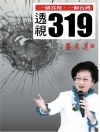When more than 150 women testified in 2018 to the sexual abuse inflicted on them by Dr. Larry Nassar when they were young, competitive gymnasts, they exposed and transformed the conditions that shielded their violation, including the testimonial disadvantages that cluster at the site of gender, youth, and race. In
Witnessing
Girlhood, Leigh Gilmore and Elizabeth Marshall argue that they also joined a long tradition of autobiographical writing led by women of color in which adults use the figure and narrative of child witness to expose harm and seek justice.
W
itnessing
Girlhood charts a history of how women use life narrative to transform conditions of suffering, silencing, and injustice into accounts that enjoin ethical response. Drawing on a deep and diverse archive of self-representational forms—slave narratives, testimonio, memoir, comics, and picture books—Gilmore and Marshall attend to how authors return to a narrative of traumatized and silenced girlhood and the figure of the child witness in order to offer public testimony. Emerging within these accounts are key scenes and figures that link a range of texts and forms from the mid–nineteenth century to the contemporary period. Gilmore and Marshall offer a genealogy of the reverberations across timelines, self-representational acts, and jurisdictions of the child witness in life writing. Reconstructing these historical and theoretical trajectories restores an intersectional testimonial history of writing by women of color about sexual and racist violence to the center of life writing and, in so doing, furthers our capacity to engage ethically with representations of vulnerability, childhood, and collective witness.
Cuprins
Introduction : Witnessing Girlhood | 1
1. Girls in Crisis: Feminist Resistance in Life Writing by Women of Color | 13
2. Gender Pessimism and Survivor Storytelling in the Memoir Boom:
Girl, Interrupted, Autobiography of a Face, and Nanette | 38
3. Visualizing Sexual Violence and Feminist Child Witness:
A Child’s Life and Other Stories and Becoming Unbecoming | 63
4. Teaching Dissent through Picture Books:
Girlhood Activism and Graphic Life Writing for the Child | 86
Epilogue . Twenty-First-Century Formations: Child Witness, Trans Life Writing, and Futurity | 101
Acknowledgments | 113
Notes | 115
Index | 141
Despre autor
Elizabeth Marshall is Associate Professor of Education at Simon Fraser University. She is the author of Graphic Girlhoods: Visualizing Education and Violence.












